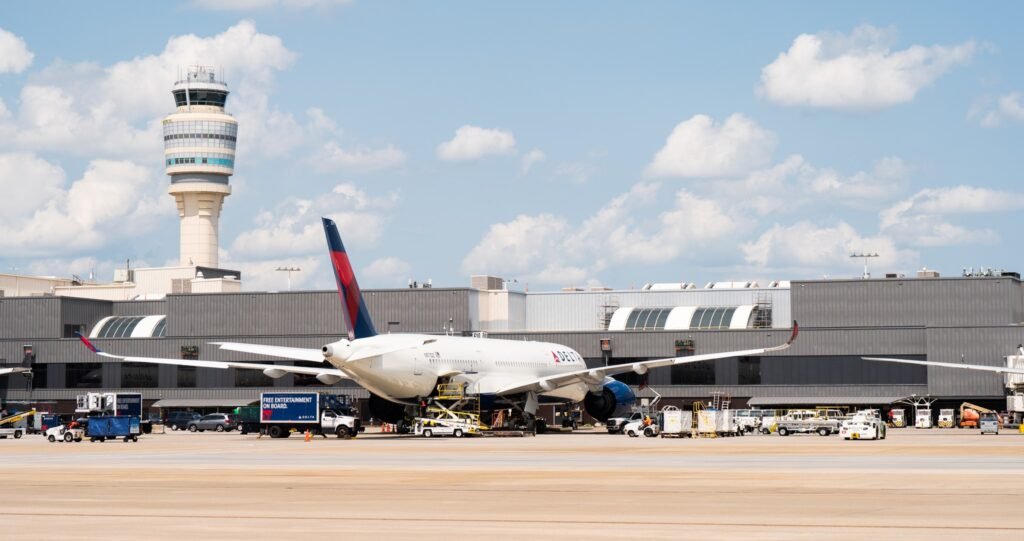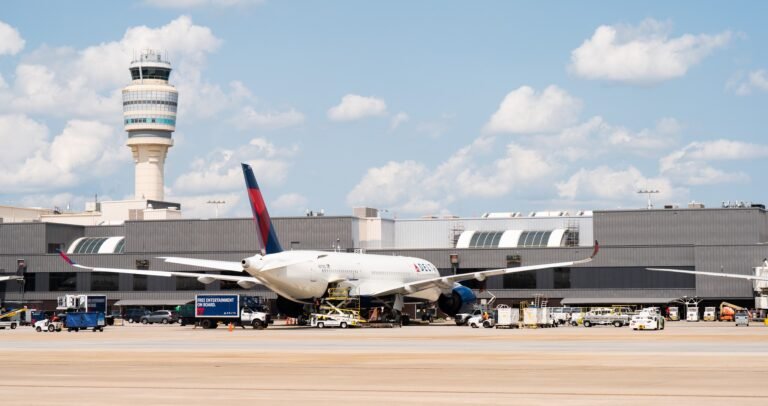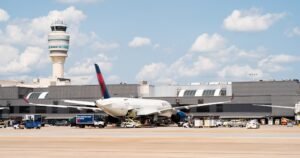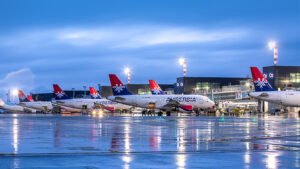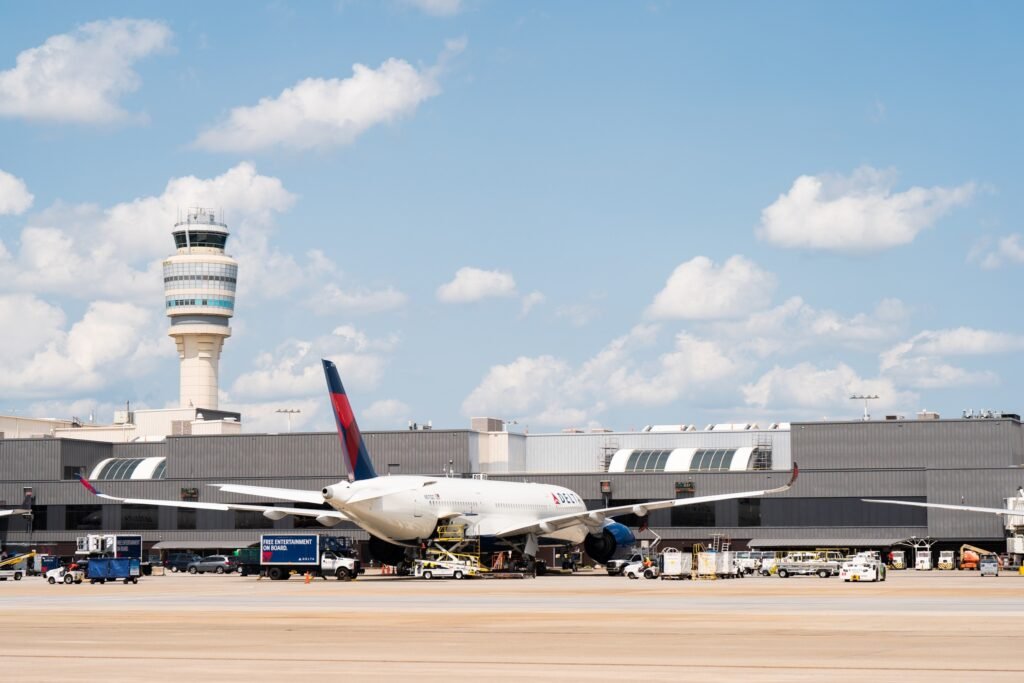
Washington, D.C, United States: The Federal Aviation Administration (FAA) has issued an emergency order mandating a temporary 10 percent reduction in flight operations at 40 of the nation’s busiest airports. The move, announced by U.S. Transportation Secretary Sean P. Duffy and FAA Administrator Bryan Bedford, is aimed at maintaining safety across the national airspace system as the government shutdown enters its second month.
FAA Cites Safety Strain, Staffing Pressures
Since the shutdown began, thousands of air traffic controllers have worked without pay, triggering severe staffing shortages and operational stress across major hubs. The FAA said it recorded 2,740 delays over the past weekend alone, reflecting growing pressure on the system.
“My department has many responsibilities, but our number one job is safety. This isn’t about politics – it’s about assessing the data and alleviating building risk in the system as controllers continue to work without pay,” Secretary Duffy said.
“It’s safe to fly today, and it will continue to be safe to fly next week because of the proactive actions we are taking.”
Administrator Bedford added, “We are seeing signs of stress in the system, so we are proactively reducing the number of flights to make sure the American people continue to fly safely. The FAA will continue to closely monitor operations and will not hesitate to take further action to make sure air travel remains safe.”
Summary of the FAA Emergency Order
According to the directive:
- A 4% reduction in domestic operations takes effect Friday, Nov 7, ramping up to 6% by Nov 11, 8% by Nov 13, and 10% by Nov 14.
- International flights are exempt, allowing airlines discretion to decide which routes to reduce.
- Airlines must issue full refunds for canceled flights, though they are not required to cover secondary costs, consistent with federal policy for government-related disruptions.
The FAA also temporarily:
- Prohibits visual flight rule (VFR) approaches at affected facilities with staffing triggers.
- Limits commercial space launches and reentries to the hours of 10 p.m.–6 a.m. local time.
- Suspends parachute operations and aerial photography missions near impacted facilities.
The agency said the measures were guided by safety data and voluntary reports from pilots and controllers showing mounting fatigue and system stress.
Impact on Travelers
Officials emphasized that the airspace remains safe but acknowledged the steps are preventive and temporary.
Airlines are adjusting schedules to comply with the phased reductions, focusing cancellations during peak domestic hours. The FAA said any expansion or rollback of the cuts will be driven by real-time safety data.
Official List of Affected Airports
- ANC – Ted Stevens Anchorage International Airport
- ATL – Hartsfield-Jackson Atlanta International Airport
- BOS – Boston Logan International Airport
- BWI – Baltimore/Washington International Airport
- CLT – Charlotte Douglas International Airport
- CVG – Cincinnati/Northern Kentucky International Airport
- DAL – Dallas Love Field
- DCA – Ronald Reagan Washington National Airport
- DEN – Denver International Airport
- DFW – Dallas/Fort Worth International Airport
- DTW – Detroit Metropolitan Wayne County Airport
- EWR – Newark Liberty International Airport
- FLL – Fort Lauderdale/Hollywood International Airport
- HNL – Honolulu International Airport
- HOU – William P. Hobby Airport
- IAD – Washington Dulles International Airport
- IAH – George Bush Houston Intercontinental Airport
- IND – Indianapolis International Airport
- JFK – New York John F. Kennedy International Airport
- LAS – Las Vegas McCarran International Airport
- LAX – Los Angeles International Airport
- LGA – New York LaGuardia Airport
- MCO – Orlando International Airport
- MDW – Chicago Midway International Airport
- MEM – Memphis International Airport
- MIA – Miami International Airport
- MSP – Minneapolis–St. Paul International Airport
- OAK – Oakland International Airport
- ONT – Ontario International Airport
- ORD – Chicago O’Hare International Airport
- PDX – Portland International Airport
- PHL – Philadelphia International Airport
- PHX – Phoenix Sky Harbor International Airport
- SAN – San Diego International Airport
- SDF – Louisville International Airport
- SEA – Seattle–Tacoma International Airport
- SFO – San Francisco International Airport
- SLC – Salt Lake City International Airport
- TEB – Teterboro Airport
- TPA – Tampa International Airport
Looking Ahead
The FAA said it will continue to review safety metrics daily to determine whether further cuts or operational adjustments are needed. “Safety reporting is showing us where the stress points are,” the agency said. “This order will remain in effect only as long as necessary to maintain system stability.”
Passengers traveling through the affected airports are urged to monitor airline communications for updated flight schedules and potential waivers.

